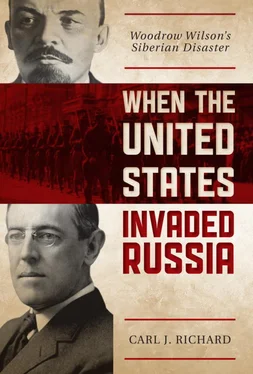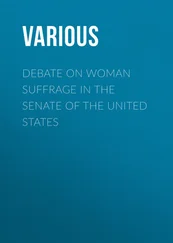Perhaps most importantly, Liddell Hart claimed, Haig failed to inform the War Cabinet about reports he had received from General Headquarters to the effect that the Ypres area, where he planned to make his primary assault, was a reclaimed marshland that would revert to its original state if its drainage system were destroyed by a prolonged bombardment. In fact, the commander of Haig’s Intelligence Staff had also informed him that records for the last eighty years indicated that heavy rains broke over Flanders in early August “with the regularity of Indian monsoons.” Haig did not inform his superiors of this report, either. While there is no reason to doubt Liddell Hart’s account, its flattering portrayal of Lloyd George steadfastly ignores the fact that he could have used his own authority as prime minister to suspend the campaign at any time he wished. Although Haig deserves most of the criticism he has received, Lloyd George’s timidity was certainly no profile in courage, and his subsequent, largely successful efforts to pin all of the blame on Haig, whom he failed to replace even after the Flanders campaign, were unseemly at best. [15] Ibid., 189; Keegan, First World War , 357–58.
The Flanders offensive began on July 31, 1917. The bare plain would have made British plans obvious to the Germans, even if their two-week bombardment had not. Though over four million shells poured forth from 3,000 artillery guns, the British failed to destroy the German machine gun nests on the right, which were situated on high ground. Thus, the bombardment succeeded only in eliminating any chance of surprising the enemy and in making the battlefield a quagmire, a situation worsened by steady torrential downpours. The bombardment churned up the ground to a depth of ten feet, exposing corpses buried after earlier fighting. When a British officer was ordered to consolidate his position, he replied, “It is impossible to consolidate porridge.” Although the British achieved some success on the left, only death awaited those unfortunates who were sent to the right. The Germans had strengthened this position, already one of the strongest German positions on the Western Front, both geographically and militarily, by constructing nine layers of defenses, including a line of listening posts in shell holes, three lines of trenches, machine gun posts and pillboxes, and counterattack units in concrete bunkers. In September Lloyd George again opposed continuation of the offensive but again deferred to the expertise of the same general he would later vilify. In October, some minor successes were achieved due to the sheer volume of artillery expended, causing Haig to tell war correspondents absurdly, “We are practically through the enemy’s defenses.” Soon after, the mud became so deep, and the assaults so costly, that even Haig felt obliged to discontinue the offensive. [16] Liddell Hart, War in Outline , 192–93, 197; Keegan, First World War , 358, 361, 367; Ellis, Eye-Deep in Hell , 45.
As the price for gaining a few hundred yards to the former village of Passchendaele, 70,000 British soldiers were killed, another 170,000 wounded, in a sea of mud. Liddell Hart described the field conditions faced by British soldiers during the Flanders offensive:
The broken earth became a fluid clay; the little brooks and tiny canals became formidable obstacles, and every shell-hole a dismal pond; hills and valleys were but waves and troughs of a sea of mud. Still the guns churned the treacherous slime. Every day conditions grew worse. What had once been difficult now became impossible. The surplus water poured into the trenches as its natural outlet, and they became impassible for troops; nor was it possible to walk over the open field—men staggered wanly over duckboard tracks. Wounded men falling headlong into the shell-holes were in danger of drowning. Mules slipped from the tracks and were often drowned in the giant shell-holes alongside. Guns sank till they became useless; rifles caked and would not fire; even food was tainted with the inevitable mud. No battle in history was ever fought under such conditions.
When Haig’s adjutant general finally visited the battlefield, he was overcome by the impossibility of what he and Haig had been ordering the men to do, and his eyes filled with tears. “Good God,” he cried, “did we really send men to fight in that?” Haig himself never visited the front until 1918, the last year of the war. [17] Liddell Hart, War in Outline , 197–99; Keegan, First World War , 368.
Even that experience apparently taught Haig very little. As late as 1926 he was still writing: “I believe that the value of the horse and the opportunity for the horse in the future are likely to be as great as ever…. Aeroplanes and tanks… are only accessories to the man and the horse, and I feel sure that as time goes by you will find as much use for the horse—the well-bred horse—as you have ever done in the past.” [18] Ellis, Eye-Deep in Hell , 84.
The Flanders offensive devastated the Allies. First, it dealt a heavy blow to British morale, which had previously impressed the Germans. British soldiers surrendered in large numbers during the offensive, speaking bitterly against the officers who had sent them into the mud. Second, the heavy losses of the British early in the offensive convinced General Paul von Hindenburg and his underling General Erich Ludendorff, the chief planners of the German war effort, that they could afford to send several more divisions against the Italians and Russians. The additional divisions contributed to a major breakthrough against the Italians, nearly destroying the Italian army in the process, and proved fatal to the Russian Army. Finally, after the Flanders offensive it became apparent that the British and French needed more help to defeat the Central Powers. Having lost hundreds of thousands of their best soldiers in mad offensives, they could not hope to defeat the Central Powers alone. [19] Liddell Hart, War in Outline , 194–95, 200–207; Hughes, Contemporary Europe , 72.
American Intervention in the War
The British and French looked partly to the United States for aid. The first step to receiving that aid had already come before the Flanders offensive on April 6, 1917, when the United States declared war on Germany. There were two causes of American intervention in World War I. The primary reason was that in January 1917 the Germans declared that they would renew their practice of unrestricted submarine warfare. Henceforth, any ship sighted in a specified zone around Great Britain would be sunk. The first such German campaign to destroy the British economy and force Britain’s exit from the war had ended when President Woodrow Wilson had issued an ultimatum to the German government threatening war in April 1916. But the following January the Germans decided to renew the unrestricted submarine campaign based on the calculation that Germany could starve the British into submission in six months’ time, as well as deprive France and Italy of vital British coal. If so, Germany would be able to win the war before the unprepared United States, with its small professional army of 108,000 soldiers, could make its power felt in Europe. In 1919 Ludendorff recalled concerning the German decision:
The Chief of the Naval Staff, a friend of the Chancellor, but at the same time a warm partisan of the unrestricted submarine war, was confident that the campaign would have decisive results within six months. The loss of freight space and the reduction of overseas imports would produce economic difficulties in England that would render a continuance of the war impossible. In forming this view he did not rely merely on his own professional judgment, but was also supported by the opinions of the distinguished economists. The shortage of shipping would cut down the transport of munitions, and in particular the huge transport of war material from England to France, which could also be attacked directly.
Читать дальше












